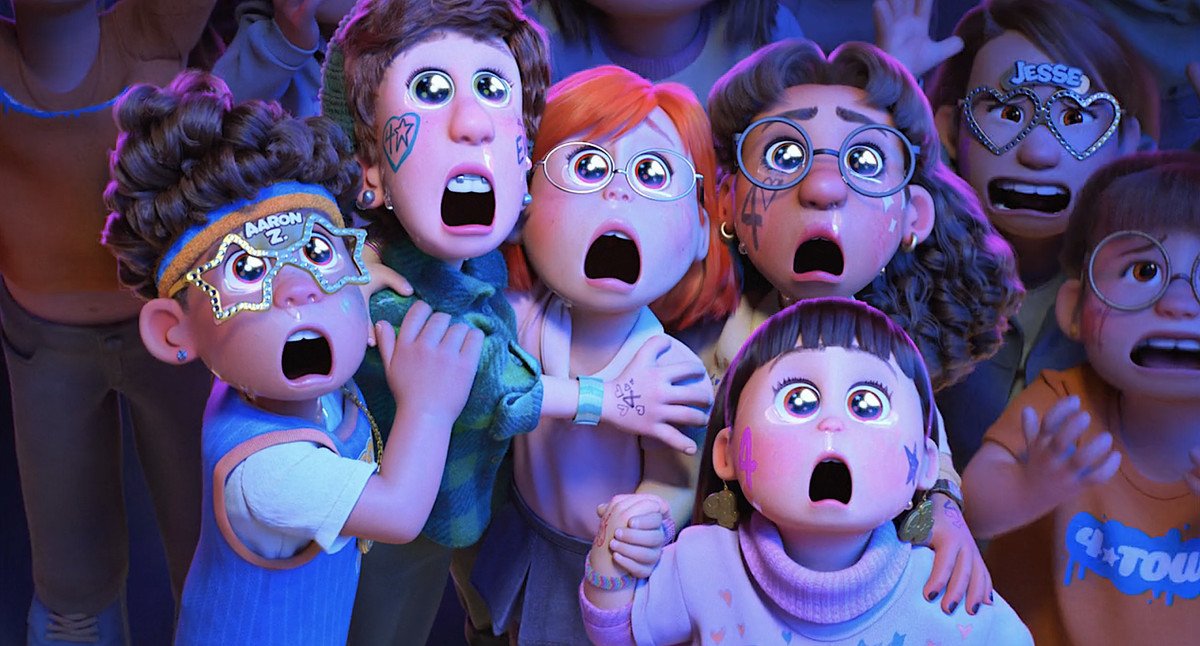Turning Rainbow
As diversity expands in the Disney universe, the animated film Turning Red displays the struggles of growing up and growing into one's true identity.
Source: Disney/Pixar
In the first two decades of life there are certain buckets or categories that I lump our years into. There are the years we don’t quite remember (0-5) and the years we went to school but it didn’t quite matter yet (6-11). Middle and high school are less easily classified because if the gaps in my memory serve, some moments were rather messy and happily forgotten. These years of not being a child but not quite yet an adult allow us to make mistakes, wear regrettable outfits, and build life-long friendships. Beyond the pain and cringe of those years is the immense personal growth that starts the second we start acting on our wants and desires. You could also call that puberty.
Raging hormones and uncertain bodies are not the most palatable pitch for a sweet Disney PG movie. However, I was pleasantly surprised by the nuance of Turning Red, the story of Meilin Li, a middle schooler with the ability to turn into a giant red panda, a reveal that has stark parallels to getting your first period. Mei first sees her red panda as a giant, smelly, and disruptive force to her life as a dutiful daughter who seeks to make her family proud. While her family pushes Mei to get rid of the panda, a family “curse”, like they had, Mei learns to embrace the panda — to appreciate the wild and crazy parts of her true self.
Source: Disney/Pixar
With themes of self-acceptance and a message that it’s okay to not have everything figured out all the time, the film provides a key positive message to young not-quite-adults. Through Mei and her friends, the film represents dorks and weirdos on the big screen and encourages young girls to allow their red panda to show.
Turning Red is the latest card in Disney’s hand that expands representation in children’s media by featuring an all-female driven creative team, led by powerful AAPI voices on and off camera. In her directorial debut, Chinese-born animator Domee Shi made the first Pixar film to be solely directed by a woman and one of few Pixar films which feature an Asian lead character. The emotional heart first seen in the short film Bao (2018) is what gives this movie its emotional depth. Shi transforms her personal childhood experience into a heart-warming film for all ages.
As a TV nerd, a favorite hobby of mine is watching the behind-the-scenes documentaries that Disney releases for its feature films. The look behind the curtain reveals the close relationship between the characters and feelings of Turning Red with the lived experiences of the leading women who made the movie. As mothers and daughters themselves, the team put their own experience into the scenes from complex mother-daughter dynamics to the teases of Sailor Moon-inspired special effects. The humor and emotional depth of the film are impressive enough and with the busiest years of production completed virtually during the COVID-19 pandemic, the film stands out as a creative success.
Source: Walt Disney Animation Studios
I will praise representation for women and the Asian-American community until my dying breath but I think there is another layer to this already ground-breaking movie. The conversations and vulnerability of exploring new identities and embracing your true self overlaps with the coming out experience remarkably well. As a queer, half-Chinese, non-binary individual, it makes sense that I would perceive the film as queer-coded, but the lessons learned from Mei’s acceptance of her red panda similarly apply to the exploration of sexuality and gender.
“Turning Rainbow” doesn’t have the same ring as “Turning Red” but if you dive deeper into the fluffy red panda, I think Meilin’s story was made to speak to the queers too.
In a rather direct comparison, Meilin’s acceptance of her changing body represents puberty as much as it does “second puberty,” a term used in the trans community to describe the transition process. For many trans people, this second puberty has both positives and negatives, much like how we see Meilin struggle to live with her red panda that pops out whenever she feels strong emotions, even in the middle of algebra class.
Yet ultimately, the joy and freedom that comes with authenticity and fully embracing oneself is worth the hassle and mistakes. While Meilin is free and excited to explore her new red panda abilities (super strength, extended jumping air time, and being a cuddly giant red panda), trans people also have new experiences and excitement upon transitioning. Elliot Page, an actor and well-known figure in the LGBTQ+ community, discussed in a recent interview with Esquire the euphoria of simply existing and the joy experienced after his transition.
Source: Disney/Pixar
Additionally, within the special effects team was directed by a queer woman so some more subtle fruity notes take place in the animation itself. A side effect of the red panda is that Meilin’s hair changes color to orange and in certain lights it appears orange, pink, and red. When she wears her white panda ears in human form, Meilin’s hair literally transforms into the colors of the lesbian flag. With an understanding that not all hair dye colors take well to Asian hair, the presence of the lesbian color pallete appears intentional. As many in the LGBTQ+ community can attest to, drastic haircuts or the dyeing of hair is a common step in coming to terms with one’s sexuality. In this way, Meilin’s hair transformation gives a voice to those that did struggle with their sexuality in a time when life as a teen feels full of chaos and turmoil.
With a movie set in 2002’s Toronto, it’d be remiss to not include the world’s obsession with boy bands. Another favorite element of mine which also carries queer undertones is Meilin’s devotion to the boy band 4*Town. Back in the 2010’s we had One Direction and before them, the Backstreet Boys and NSYNC. Which group 4*Town resembles isn’t relevant, but the fandom behaviors certainly do. Meilin and her odd-ball group of friends each have their favorite member of the band and are willing to go to great lengths to listen to their music. When she’s having a tough day, Meilin is given a custom made 4*Town CD and a large portion of the plot follows the group as they raise enough money to buy 4*Town concert tickets.
Today, I have no idea how I would listen to a CD in 2022, but fandom has equally progressed. With the advent of social media and the accessibility of technology, fandom has extended to digital communities that center around sharing official and fan-made art, videos, and other forms of content. Meilin’s doodles show that, in today’s age, she would be a prolific 4 Townie, specializing in fanart and probably sell her work at conventions. Oftentimes, fandoms aggregate around certain plot points or alternate universes that these pieces of fan-made content show. Until more recently, to see non-heterosexual relationships one usually had to revert to fanfiction or fanart to see characters within the fandom universe in queer relationships. If a fanfiction piece about Harry and Louise from One Direction can make it into a Euphoria episode then I guarantee the 4*Town fanfiction would be a little fruity too. (Especially if seeing the 4*Town boys makes bully-turned-friend Tyler Nguyen-Baker swoon the same way as the girls.)
Source: Disney/Pixar
Overall, Turning Red paints an authentic picture of what growing up looks like in a first-generation Chinese immigrant household. Representing the AAPI community well, the creative team behind the movie put emotional depth as well as sincere presentation into the animated film. With subtle nods to the queer community, Turning Red stands out as a well representative Disney movie made during a time when representation was under deep scrutiny. Coming off strong performances from the live action Mulan and Raya: The Last Dragon, the representation of marginalized communities in entertainment is progressing so far with authenticity and vulnerability. With diverse and honest storytelling, the film engages a wide audience and encourages you to embrace what makes you special.
Amy Chin (she/they) is a contributing writer for juxtapose magazine.
Working as an analyst at Showtime Networks, Amy pursues their passions in entertainment and media. A creative force in a corporate environment, Amy uses her free time to explore her other interests in diverse storytelling, living with mental health struggles, and the angst of being young in your 20s. Through their writing with Juxtapose and personal blog, Amy shares their perspective with the world in the hopes that what makes us unique can also be what brings us all closer.






